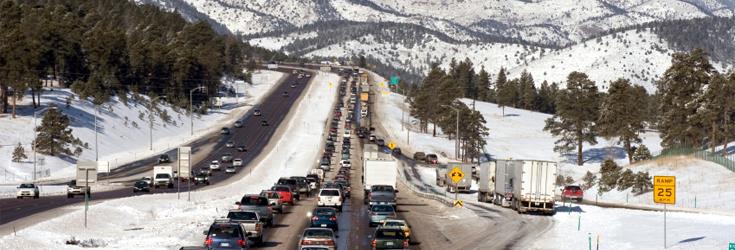
There are few worse feelings than when peak amounts of stoke abruptly vanish as visions of first chair and untouched bowls are replaced with the harsh red of braking tail lights stretched out as far as the eye can see. The euphoria of heading to ski resorts is muted by the dread of highway traffic where you and thousands of your closest friends all sit anxiously awaiting a break in the deadlock.
Particularly since COVID-19 emptied cities around the country (and the world), popularizing work-from-home schedules, increasing remote jobs, and spurring population migrations west, many ski cities and towns in North America have struggled with more motorists on roadways destined for their waiting slopes. Established infrastructure including roads leading to and leaving from resorts and available parking are not sufficiently meeting the increased demand during peak times. Factor in frequent winter weather driving conditions, road closures, and patrons flocking to resorts in never-before-seen numbers, all combining to create the perfect recipe for standstill traffic.
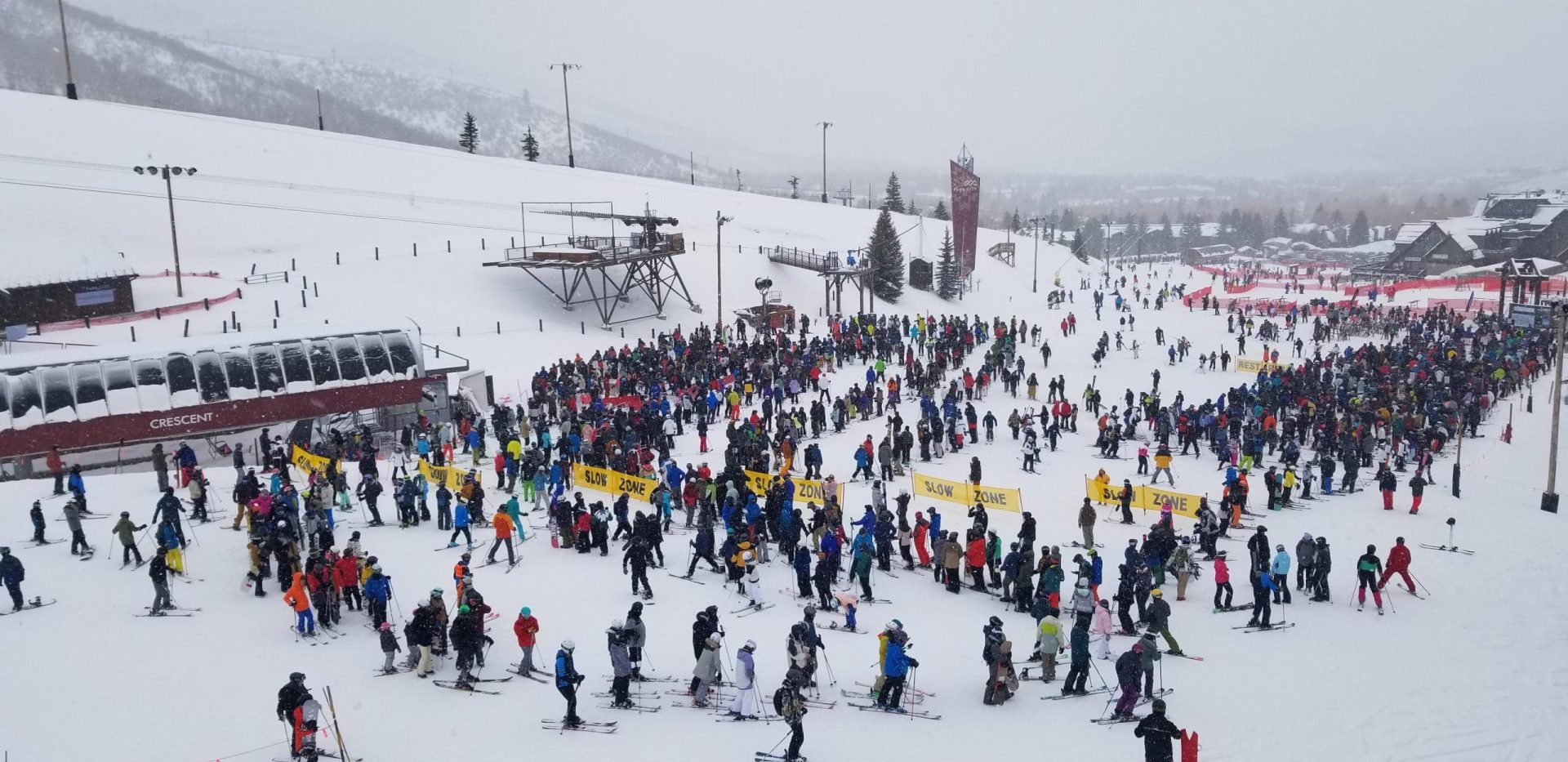
Unfortunately, there is no panacea for the traffic problems plaguing ski towns around the West. Efforts to remedy the traffic crisis have focused on encouraging or incentivizing carpooling, building expensive gondolas, establishing trains, and revamping public transport to, from, and within popular towns. Other ideas will undoubtedly sprout up as the problem persists; however, until a suitable solution is unveiled, the most effective actions are to avoid known congested destinations, visit during off-peak times, or take part in the time-honored tradition of waking up way too early to get on the road before anyone else.
There is very little cold, hard, factual evidence of which ski towns in North America definitively experience more traffic than others, but through years of travel experience and conversations with other skiers and riders, these five Western ski towns, listed alphabetically, are widely regarded as having the WORST issues with traffic.
Lake Tahoe, California/Nevada
Lake Tahoe offers a cluster of ski areas within driving distance of Sacramento, San Francisco, San Jose, Oakland, and Reno accessed by the I-80 corridor. Frequent road closures, poor weather conditions, narrowed lanes, a massive portfolio of rentable Airbnb’s attracting a large base of weekend travelers, and a few of the most popular ski resorts in the country have led to persistent traffic problems around the lake. In peak periods, Tahoe’s roads are obstructed by traffic, while parking demands far exceed capacity in towns and recreation sites. The estimated 15 million visitor-days per year influx of traffic has caused environmental consequences for local communities including air and water quality issues, while municipal first responders have voiced concerns regarding the dangers the increasing traffic has posed for expeditious response times to emergencies.
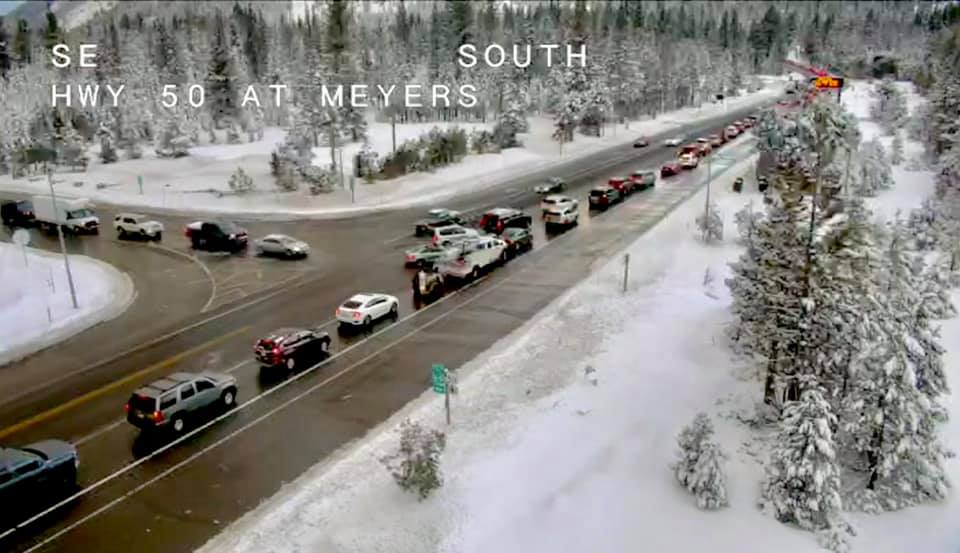
Park City, Utah
Located 30 minutes from downtown Salt Lake City, and within easy driving distance of Ogden, Provo, and an international airport, the small town of Park City is overrun with ski enthusiasts for much of the winter. Frustrated locals have had enough, and petitioned the Talisker Group to evict Vail Resorts from Canyons Resort as a result of insane levels of traffic, among other complaints. Gondolas, tunnels, and additional parking spaces have been brought before the city council, as well as the proposed addition of a massive 1,800-space parking garage. Time will tell if such expensive projects find the necessary funding for completion and if heavy traffic problems are mitigated or persist despite the town’s continued efforts.
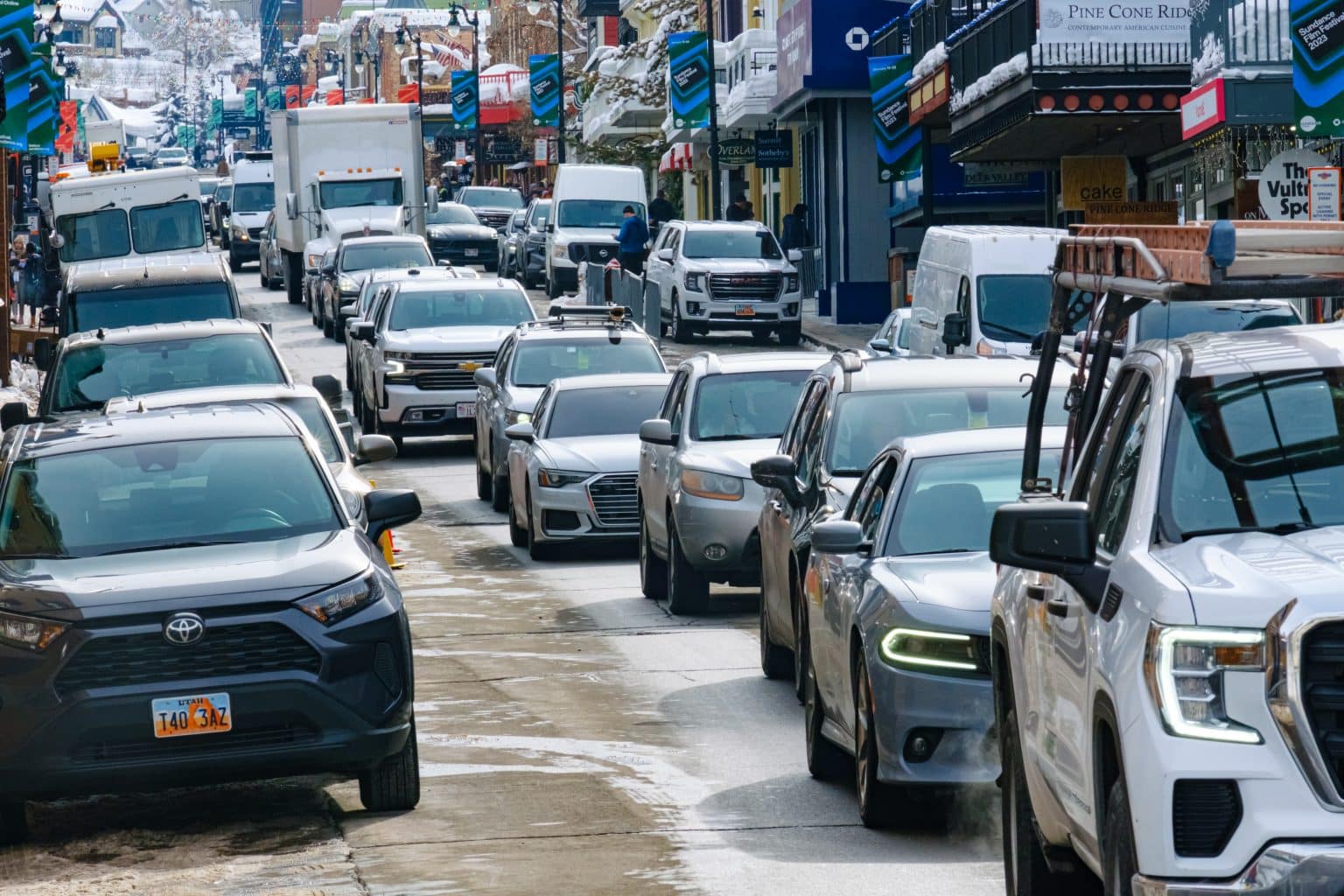
Stevens Pass, Washington
Stevens Pass, located on the two-lane Highway 2 in Washington State, is a popular ski destination for the 4.2 million people residing in the greater Seattle area. Due to heavy traffic present along U.S. Highway 2, motorists often reroute into the smaller towns and cities on the way to Stevens Pass while probing for alternate courses. This leads to side streets and neighborhood roads hosting disproportionate amounts of traffic, with weekends and holidays posing as the main culprits. Residents have voiced increasing displeasure at becoming trapped in their homes as a result of heavy traffic restricting their ability to commute to work, shop, and do other everyday activities.
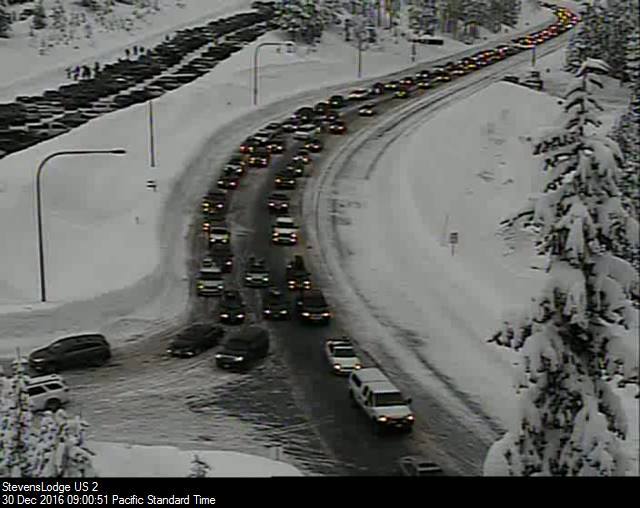
Vail, Colorado
Colorado residents and a plethora of tourists frequently experience extended delays on the way to and from Vail. With major metropolitan areas Denver, Colorado Springs, Boulder, and Fort Collins nearby and all relying on the infamous I-70 corridor whisking motorists to Summit County ski areas or beyond, every weekend, holiday, and storm brings heavy traffic and hours-long delays. Inclimate weather often shuts down parts of the interstate or makes crossing over Vail Pass a white-knuckle adventure, and inappropriate vehicles for the road conditions combined with unprepared or inexperienced drivers are commonplace and have even inspired the creation of popular social media parody accounts. Once in town, the scarcity of parking frequently leads to additional backups and delays getting onto the slopes.
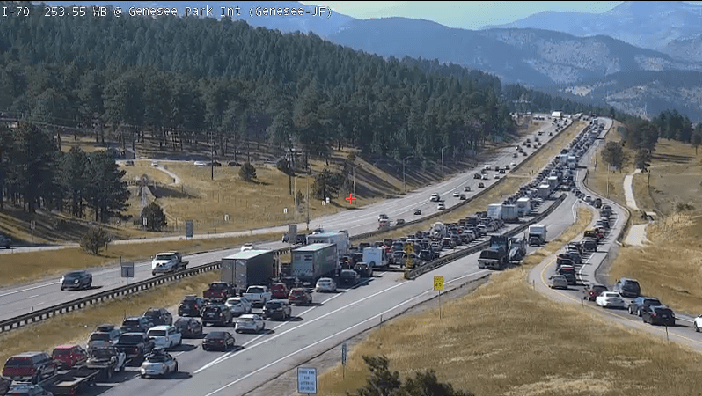
Whistler, British Columbia, Canada
Accessed by Highway 99 in Canada, Whistler is only 75 miles from Vancouver, BC, and less than four hours’ drive away from the greater Seattle area. Bumper-to-bumper traffic for much of the drive is commonplace on weekends and other peak times, while residents of the town frequently lament the increasing amounts of carbon-emitting motorists affecting their environment. Improved regional transit is one proposed undertaking to reduce the traffic conditions between Whistler and other small towns on Highway 99; however, the region has been one of the fastest-growing areas in Canada since 2010 and more drastic measures will likely be needed in the coming years while the population boom continues.
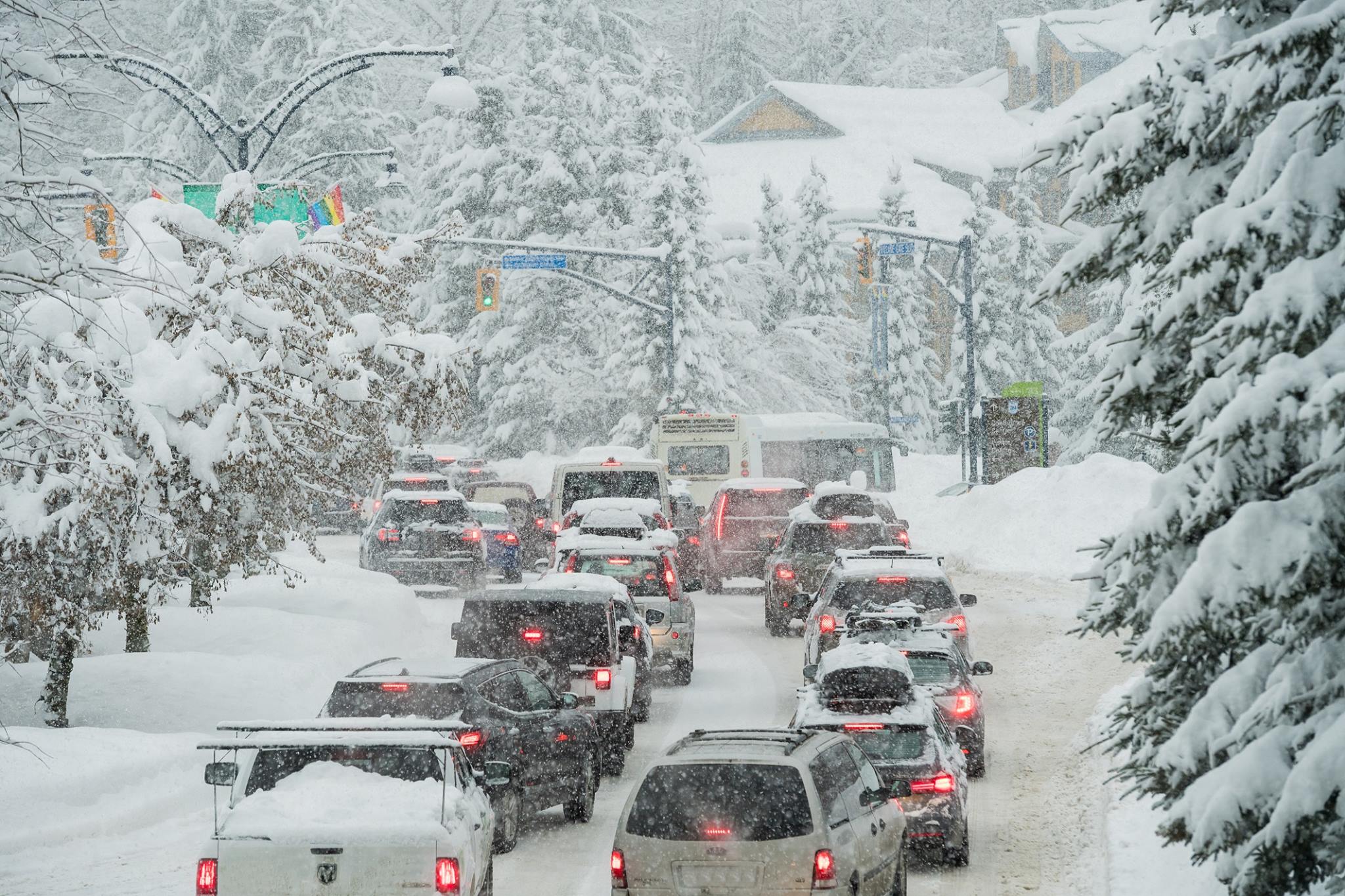
Traffic will never disappear completely as storms, natural disasters, accidents, and established infrastructure shortcomings will always create slowdowns in the mountains regardless of how many lanes are available or how much money is spent fixing existing traffic bottlenecks. However, populations continue to explode in Western states, tourists increasingly flock to small mountain towns, and ski/board culture is rapidly expanding with easier accessibility. The ski industry, in conjunction with municipal and state leaders, must proactively find and implement suitable solutions to combat the frustrating, time-wasting, damaging effects of traffic within mountain communities.